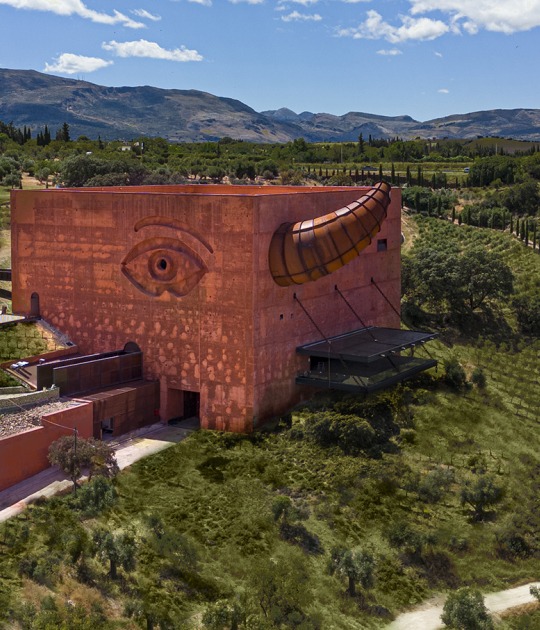The Osservatorio, opened in December 2016, is spread across the fifth and sixth floors in the Galleria's eaves, and overlooks the building's glass and steel vaulted roof and cupola.This space was the show venue for Prada's first Resort collection designed by AMO.
Here AMO, with mirrors and pastel tones, made a very simple intervention: undulating screens with distorted images of the galleria itself and details of the collection in pastel colours on the one side; and views to the galleria itself, the iron dome by Mengoni on the other. The latter was left largely unobstructed aside from reflective and translucent columns in the same dusty pink as the satin covered benches.
Description of the project by Prada
SUSPENDED ENSEMBLE
For the Prada 2018 Resort fashion show, AMO reinterprets Osservatorio, Fondazione Prada’s new exhibition space dedicated to photography in Galleria Vittorio Emanuele II.
The set is conceived as a confrontation between real and manufactured moments.
The linear arrangement of the seating orientates the guests towards the cupola placed beyond the large windows. Enhanced by both reflective and translucent columns, the guests have a transfigured view of the chiseled profile of Mengoni’s architecture. Models walk along the windows, glowing in the afternoon sun, suspended between the sky and the ornate iron dome that acts as the silent backdrop for the show.
On the other side of the room this scene is deconstructed and magnified. A continuous mirror running along the wall echoes the overall scene, augmenting the room’s proportions. Distorted fragments of Galleria and evanescent details of the collection cover the surfaces of a series of screens in reflective and pastel colors, blending the spectacle into the set, creating an ephemeral ensemble.








































